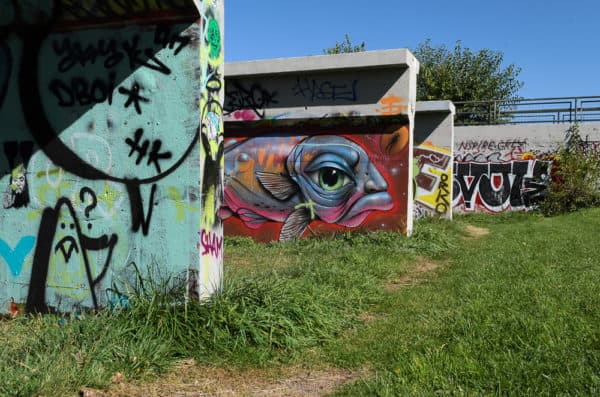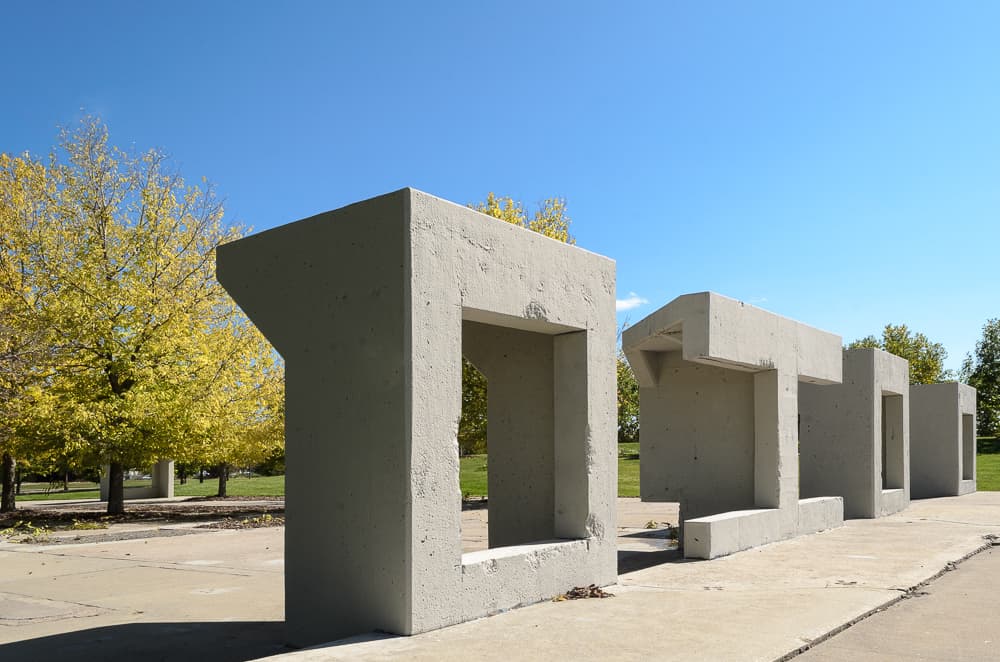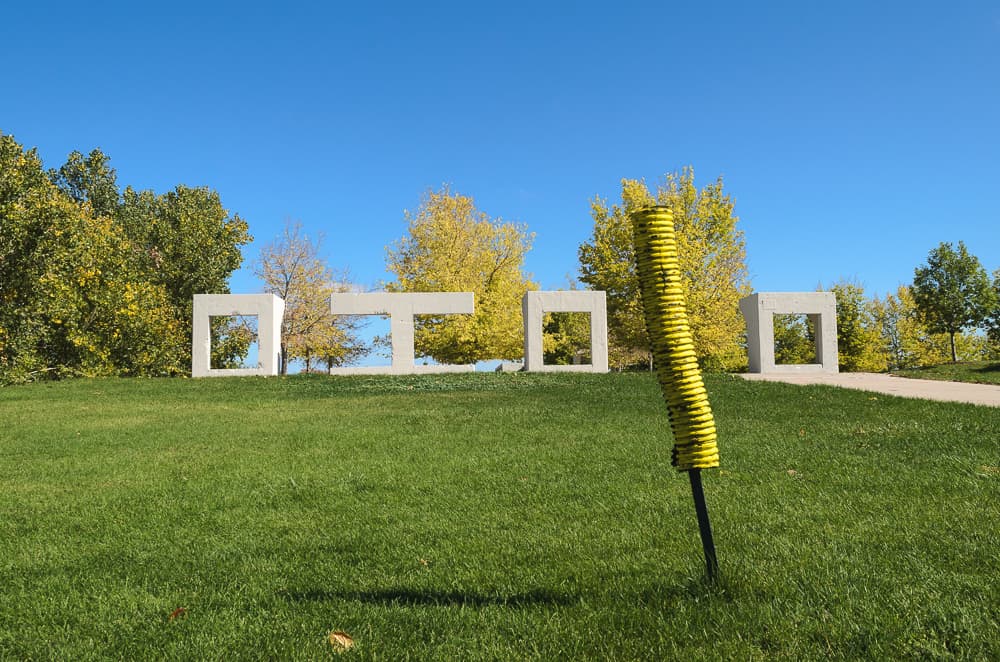
Sal Carpio was one of the first Latino members of Denver City Council. The Saguinette family left a mark on Globeville that stretches back more than 150 years.
Now Northside Park in Globeville will be known as Carpio-Sanguinette Park to honor their legacies.
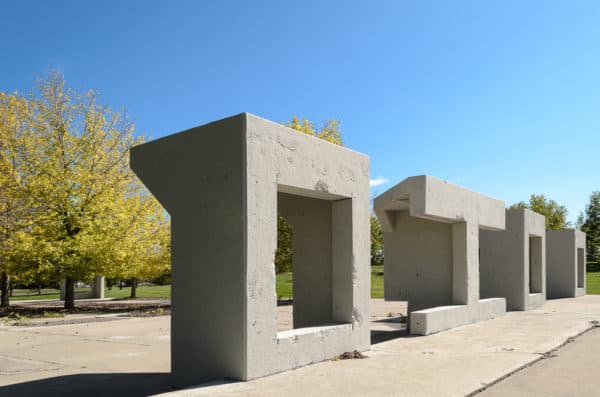
Northside Park sits on the site of the former Northside Wastewater Treatment Facility, built in 1937 on farmland, some of which was once worked by the Sanguinette family, on the north banks of the South Platte River in Globeville. The facility was a blight on the Globeville community for more than a decade after it closed, but when the area was converted to a park, portions of the facility's concrete barriers were converted into sculptures that still sit in the park today. Wenk Associates designed the park with input from the community.
Westword named the park "Best Reuse of a Sewage Plant" in 2000, and it received a Merit Award in Design from the American Society of Landscape Architects in 2001.
Here's how the Cultural Landscape Foundation describes the park:
A central axis connects the parcel’s entrance at a parking area to the northeast with a secondary access point on the southwest. Two playfields are partially enclosed by the curving structures of former holding tanks. Groves of deciduous trees frame the northeastern entrance, and remnant walls are painted with graffiti murals, providing an ever-evolving display while recalling the counterculture evident at the site before its renewal. Other remnant features are reused as seating or repurposed for their sculptural interest. A plaza comprises a grid of gravel beds, intersecting concrete paths, and a bosque of trees. Undulating topography and vegetation patterns reveal and conceal the park’s surrounding context, while quotations from area residents are engraved into sidewalks and ruins.
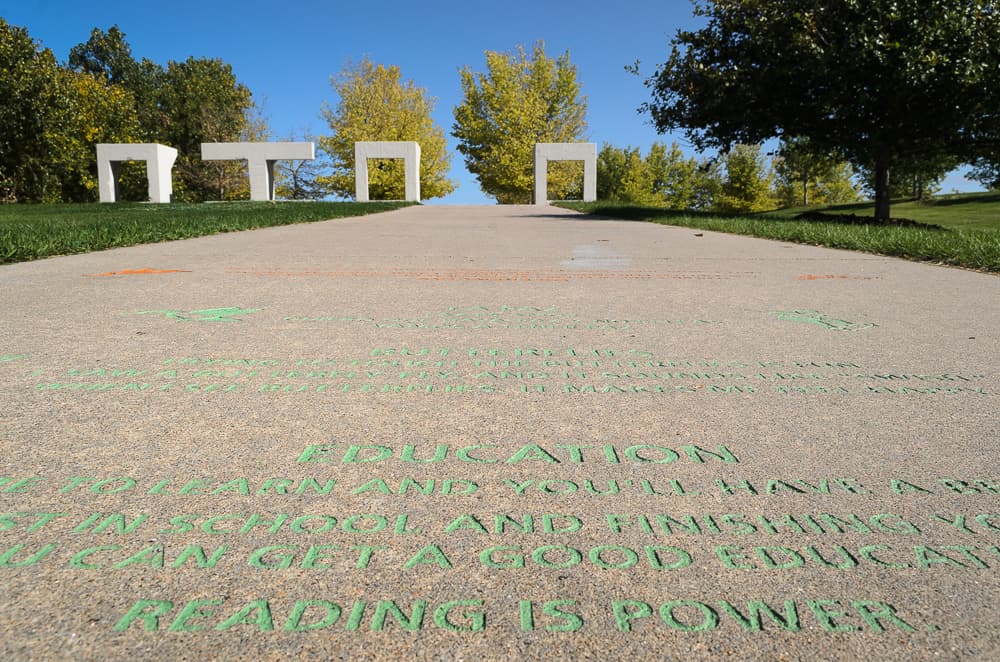
Residents in Globeville initiated the renaming process for the park in early 2016 with the help of Councilwoman At-large Debbie Ortega. They wanted to recognize the important contributions of immigrant families to Globeville and the work of Carpio, who spent part of his childhood in Globeville and who represented District 9, which includes Globeville.

Carpio wrote the Registered Neighborhood Notification Ordinance in 1976, which gave neighborhoods an official voice in land use decisions and allowed registered neighborhood organizations to play the role that they do today. He also added significant park land to Denver, including securing the money to buy the land that became Northside Park. He helped redevelop the Central Platte Valley, once a mash of railroad lines and today the offices and residences around Union Station.
The Sanguinette family settled in what is now Globeville in the 1850s, and some of their descendants still live there today. In addition to farming in the area, the Sanguinettes ran a grocery and were instrumental in the fight to stop upstream slaughterhouses from dumping waste in the South Platte.
The Denver City Council voted unanimously to rename the park earlier this month.
